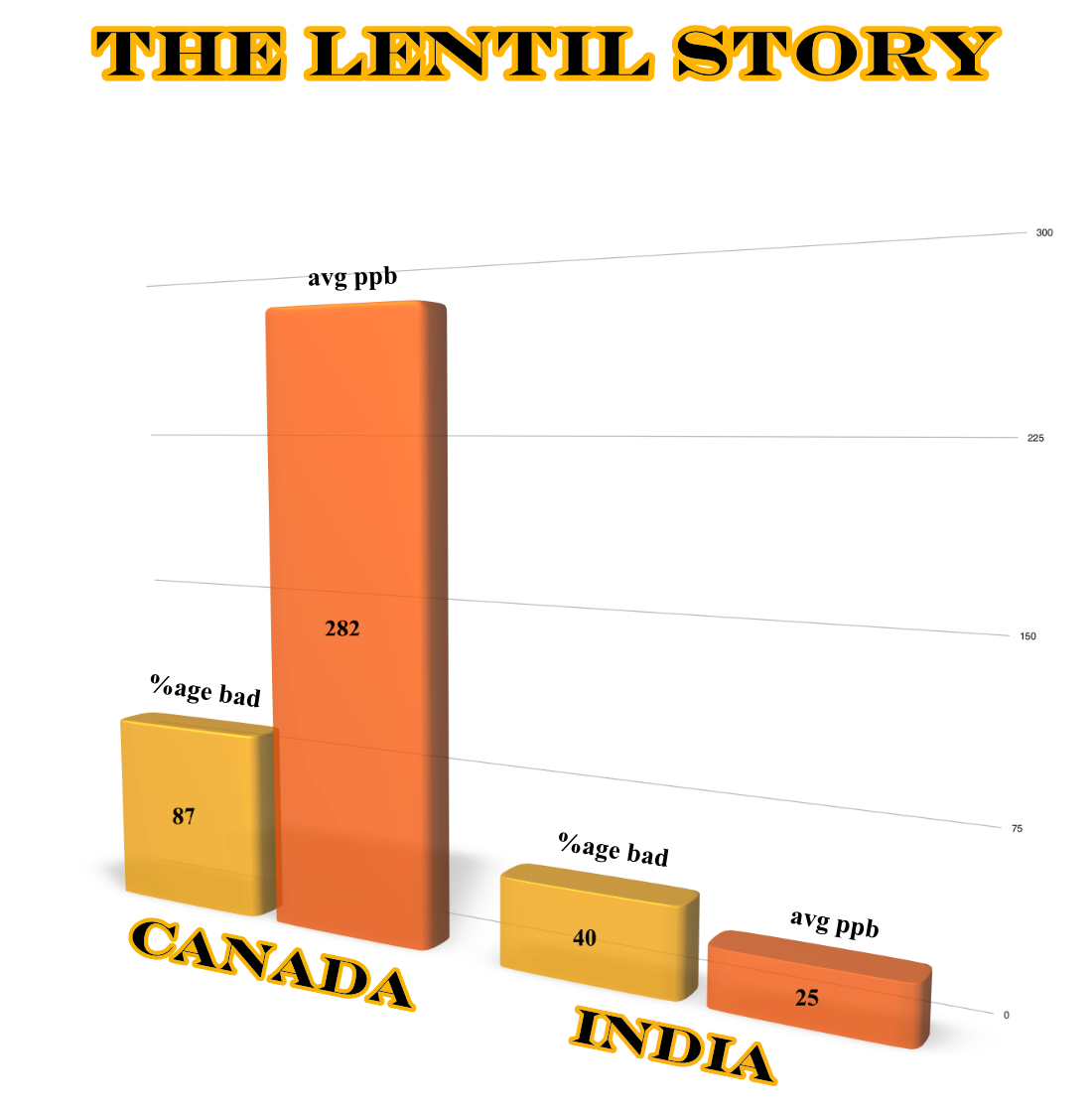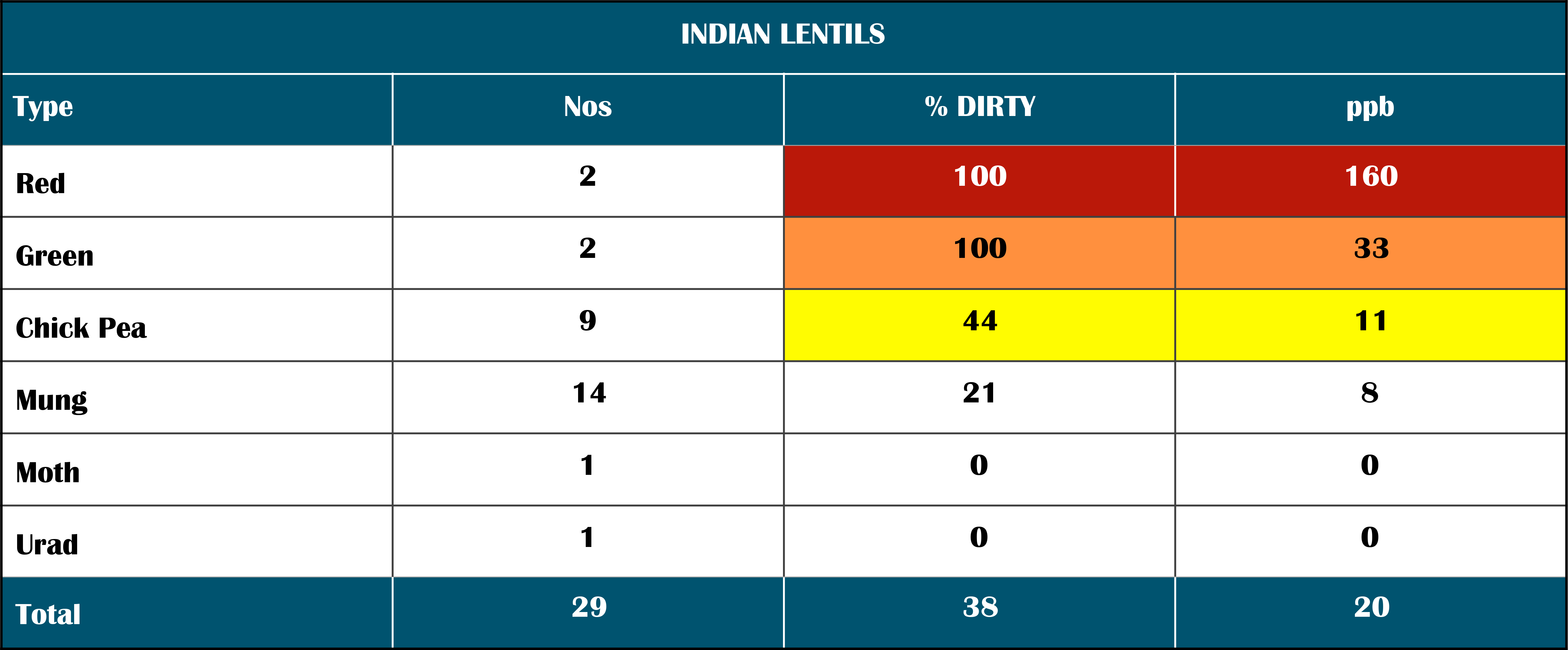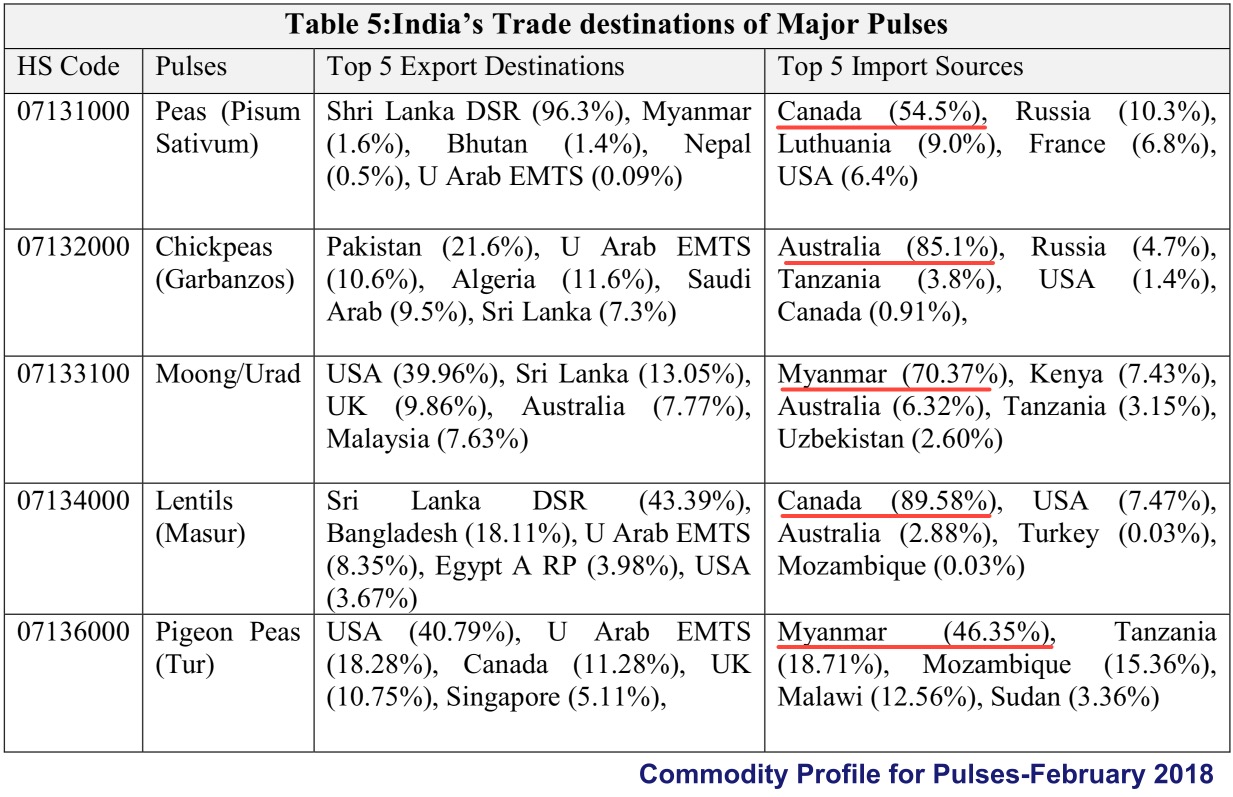It starts with the Canada-India link on lentils and ends with possible glyphosate-heavy metal link just disclosed by Anthony Samsel.
It took me several months of stay in India, to come to the conclusion that the most important link between glyphosate and INDIA, for the people living here, might be through Canadian lentils.
I already had rear 8,000 test records from the Canadian Food Inspection Agency on foods tested for glyphosate, and further near 100,000 records of other biocides in food. I already knew how bad the lentils and chickpea were, from the Canadian tests.
I knew Canada was growing and exporting lentils to India. I knew Jodi Koberinsky of Ontario was doing her Masters degree work on this Canadian lentil to India issue.
I knew the Canadian Province of Saskatchewan grew most of these lentils, having allocated upward of 7 million acres of land to it. India was unable to cope with local demand for pulses and Canada had become by far the largest exporter of pulses to India.
I also knew, by analyzing the CFIA data, that Canada along with USA produced the most toxic of all foods on earth, and that lentils grown in Canada contained high levels of glyphosate, averaging several hundred parts per billion and that over 80% of Canadian lentil samples were contaminated with glyphosate.
I also saw lentils imported from India and tested by CFIA showed lower levels of glyphosate. This points to the possibility that India is also using glyphosate in lentil production, but perhaps not as much as Canada, or that the so called Indian lentil were mixed up already with Canadian product.

Lastly, I knew from young women like Stephanie of British Columbia who lived in the agricultural belt in Saskatchewan, how her family was poisoned by aerial spraying of glyphosate around her home, how her dogs got sick, her children and pregnancy got affected, how they themselves got sick and finally how things started turning around when they migrated out of that place and resettled in British Columbia, where aerial spraying is used over forests, regrettably, but not over agricultural and residential areas.
I knew most folks in India ate lentils, either in their original form or as powdered version added to various processed foods.

And now, from several articles, I came to know that Canada was perhaps the largest exporter of pulses to India and the amount sold to India is considerable – enough to perhaps make a major impact in the slow poisoning of the Indian population.

Not just that, I now had information from friends that even in the remote and biologically diverse regions of the Himalayan foothills, where travel itself is difficult, glyphosate was already being sprayed around rubber plantations. Glyphosate had reached far corners of India as the first arrivals of a civilization gone toxic.

However, folks in India were not yet sufficiently aware of the extreme dangers associated with the use of glyphosate. I was mulling over all these issues, when I called Anthony Samsel in New Hampshire, USA, for a chitchat on glyphosate, lentils and how glyphosate might be affecting the very DNA of a plant by switching wrong genes on or off.
Anthony Samsel told me about the suspected Glyphosate-Heavy metal link and the need to test lentils with different levels of glyphosate and heavy metals like Lead, Cadmium, Aluminum.
This was breaking news.
This also could be the link that India needed.
India needed to:
- send samples to Anthony Samsel, which I would engage in arranging
- find ways to get the local government agencies to test imported lentils against glyphosate and find ways to reject the shipment if glyphosate content was high.
- get the government to engage in large scale and broad based testing of its food for glyphosate contamination and release the results to the people.
- get the government to disclose hitherto hidden safety document that is supposed to prove that glyphosate does not harm higher mammals.
I would also need to send Saskatchewan’s lentils to Anthony.
So, for now, lentil-heavy metal link was the breaking news, and the lentil-glyphosate link might just be the 900 pound gorilla at India’s dinner table, as well as all folks in North America that drop in to eat Indian food at local restaurants, as well as those that eat processed, packaged food that contains ground lentil powder.
